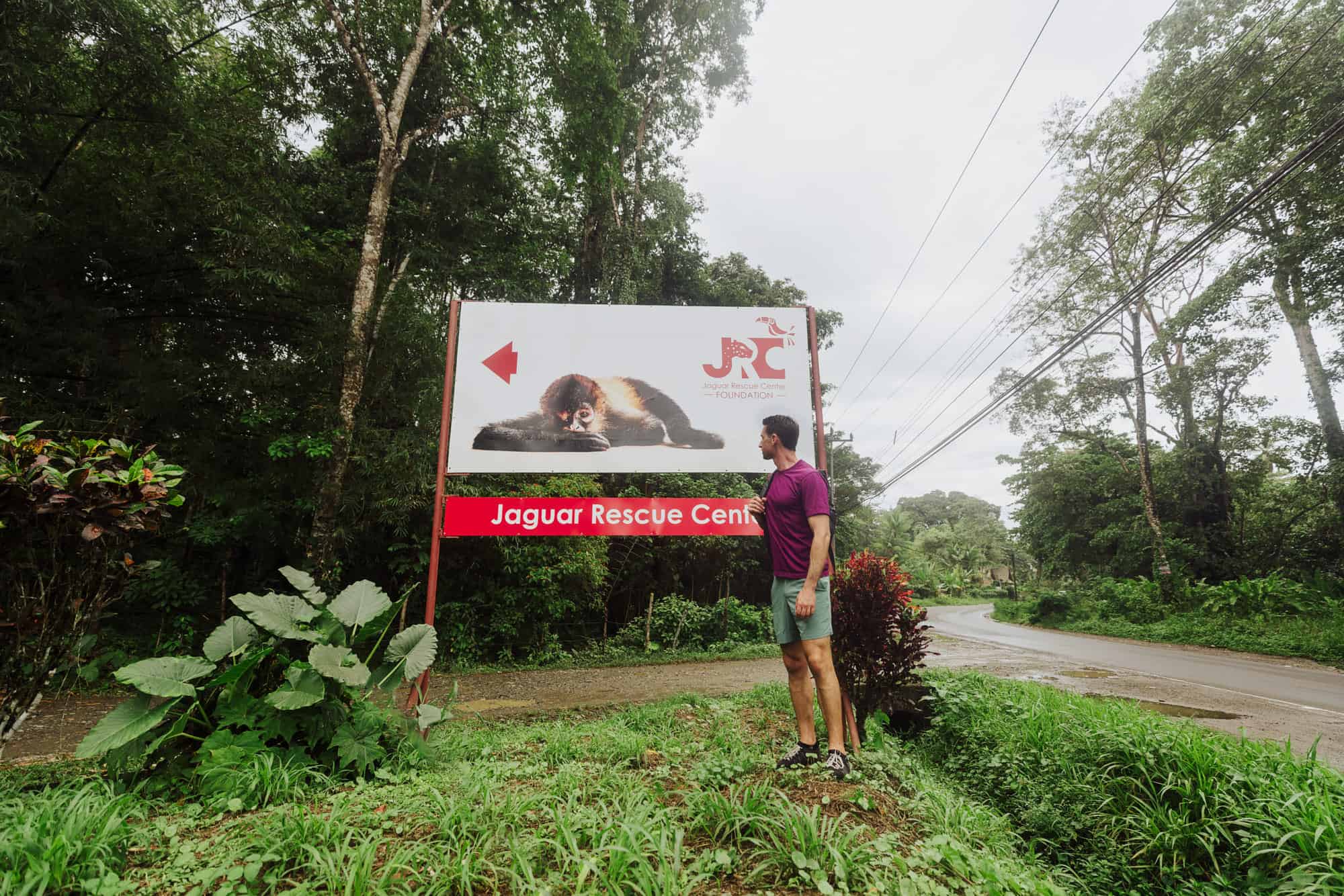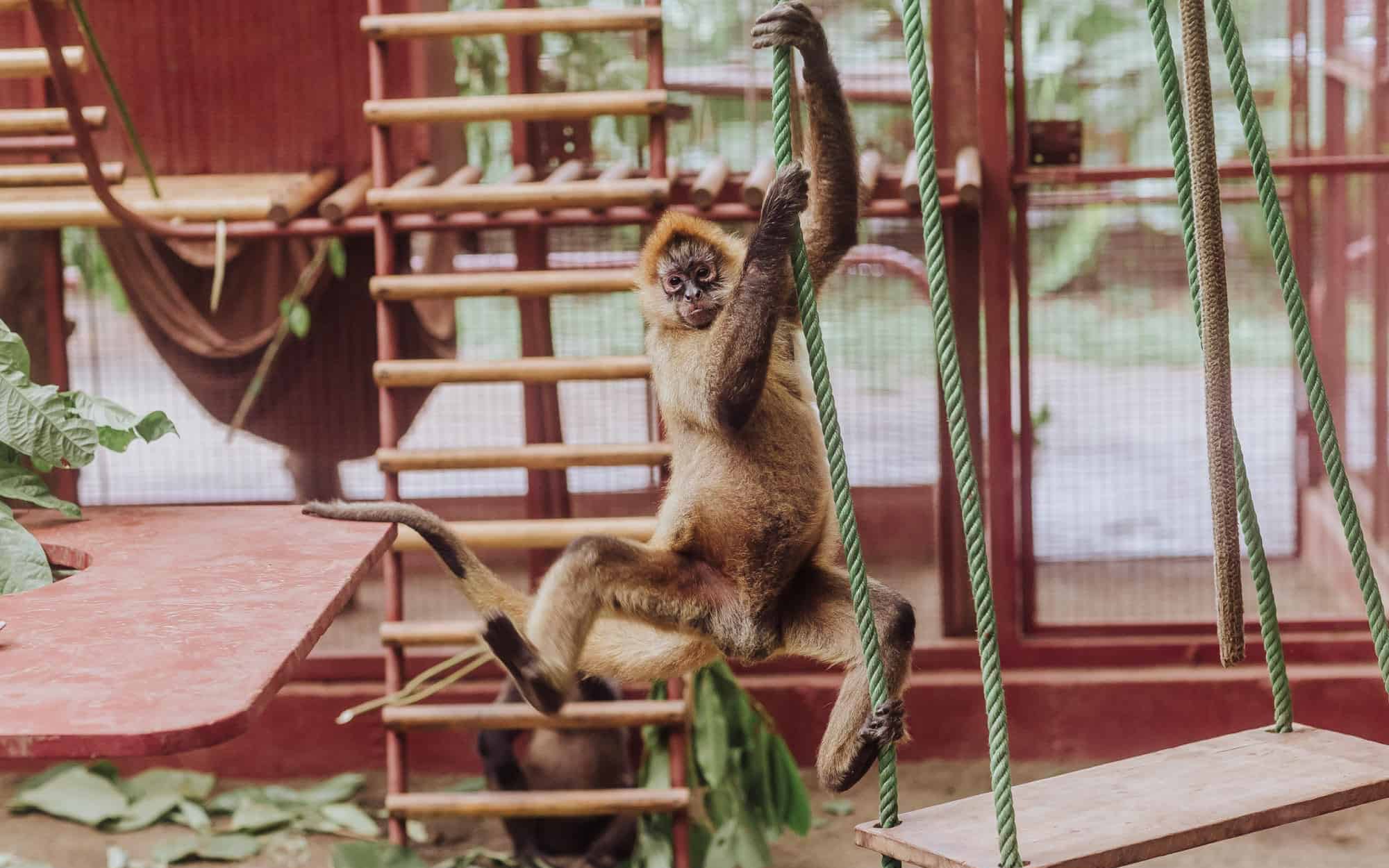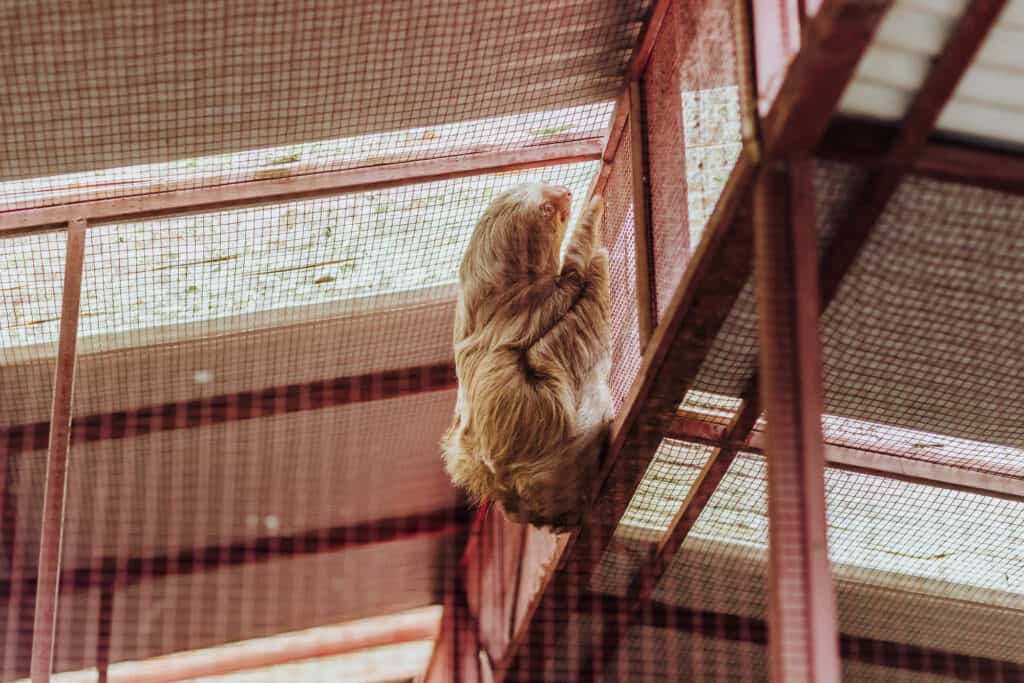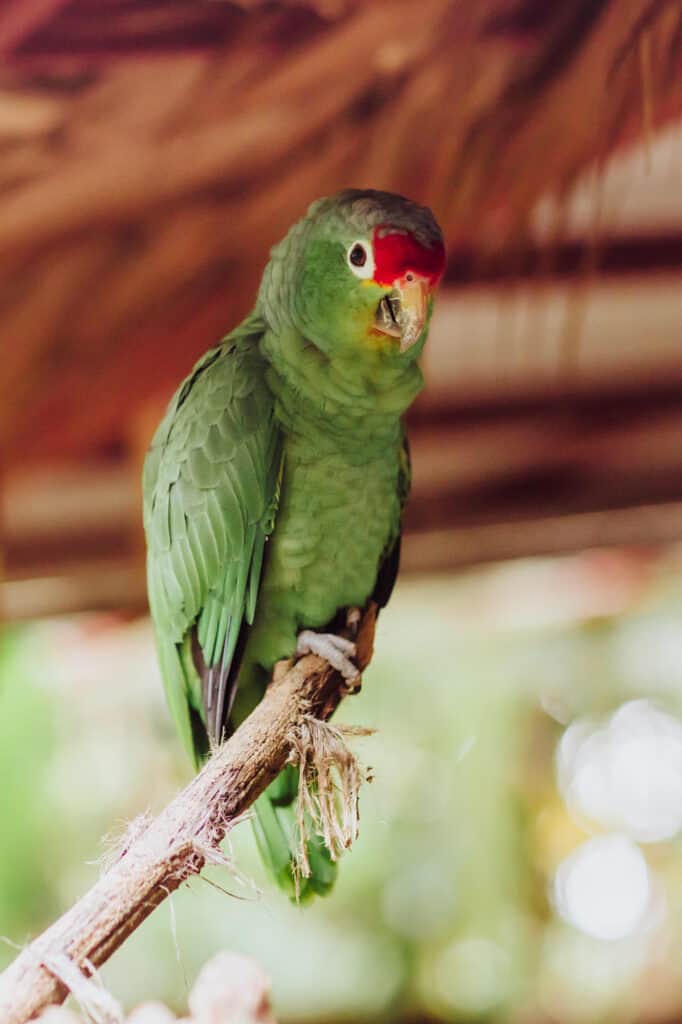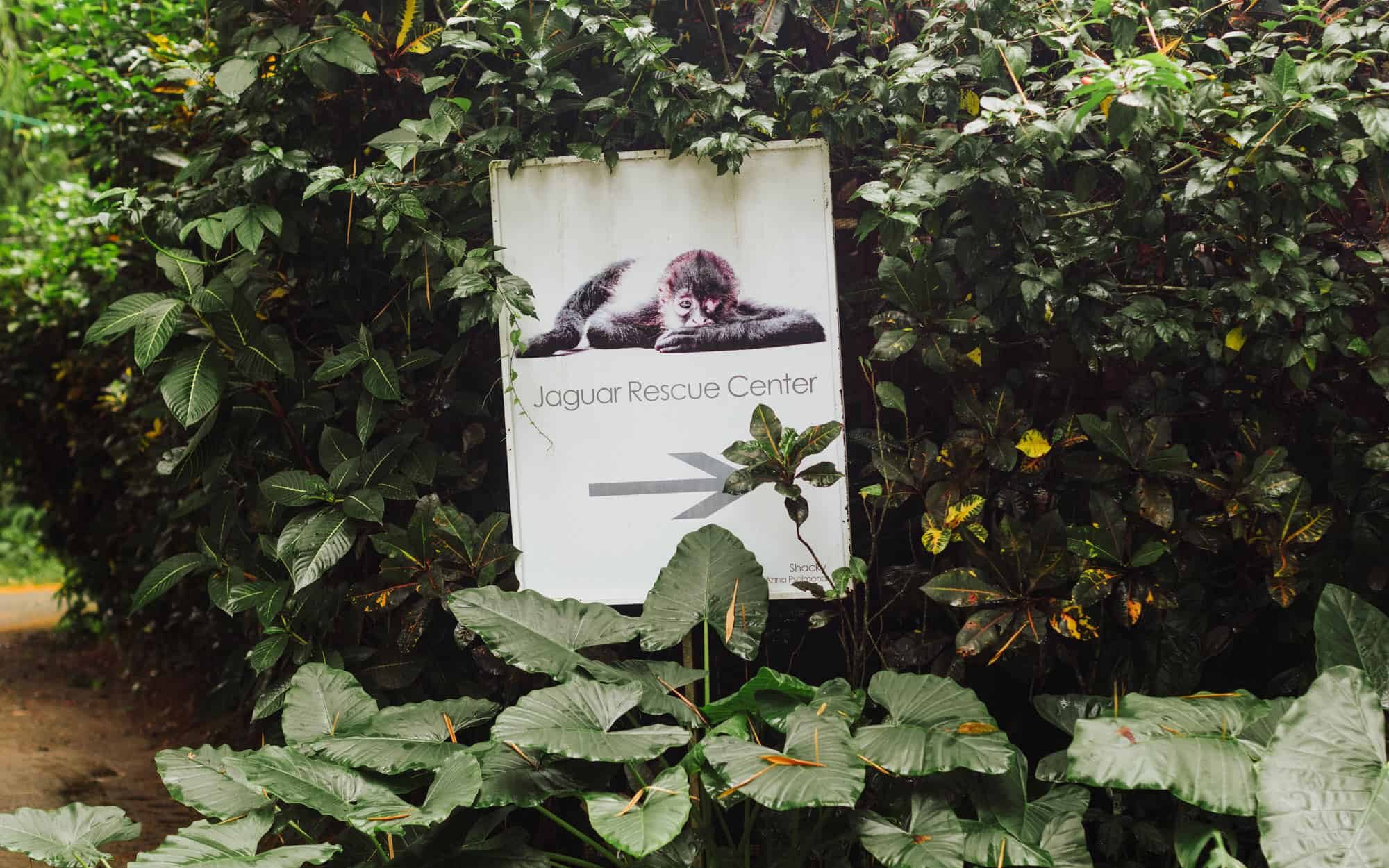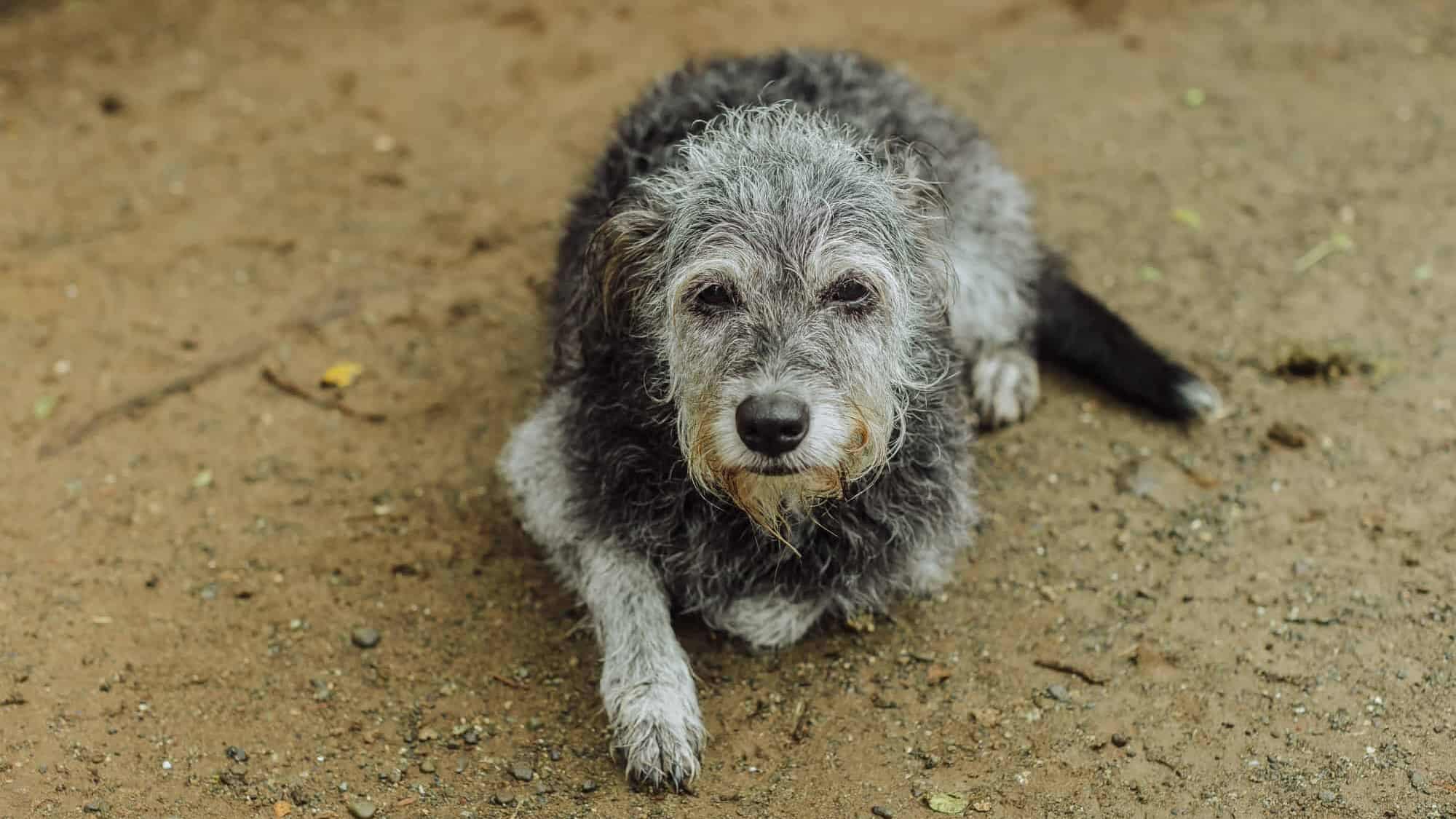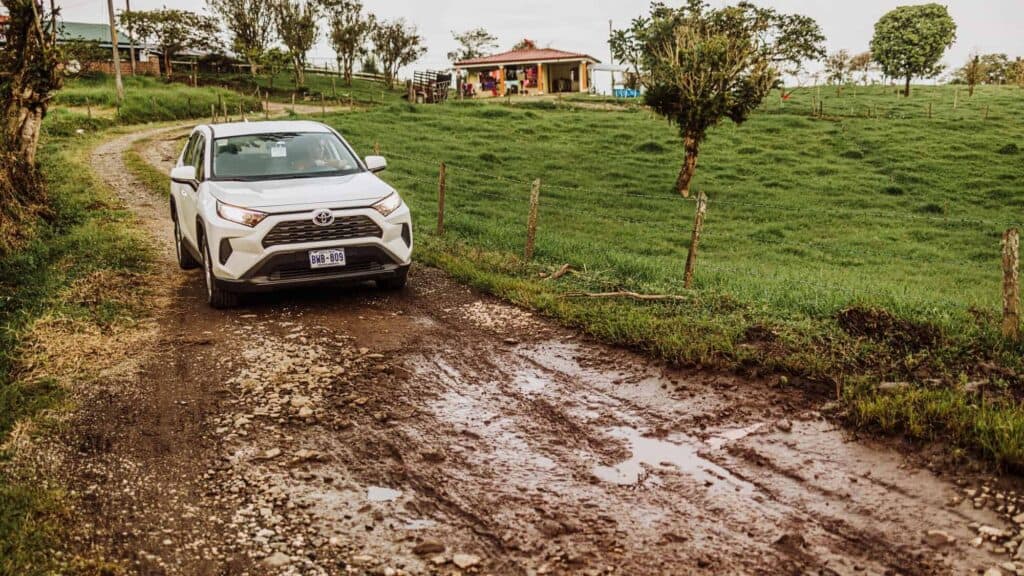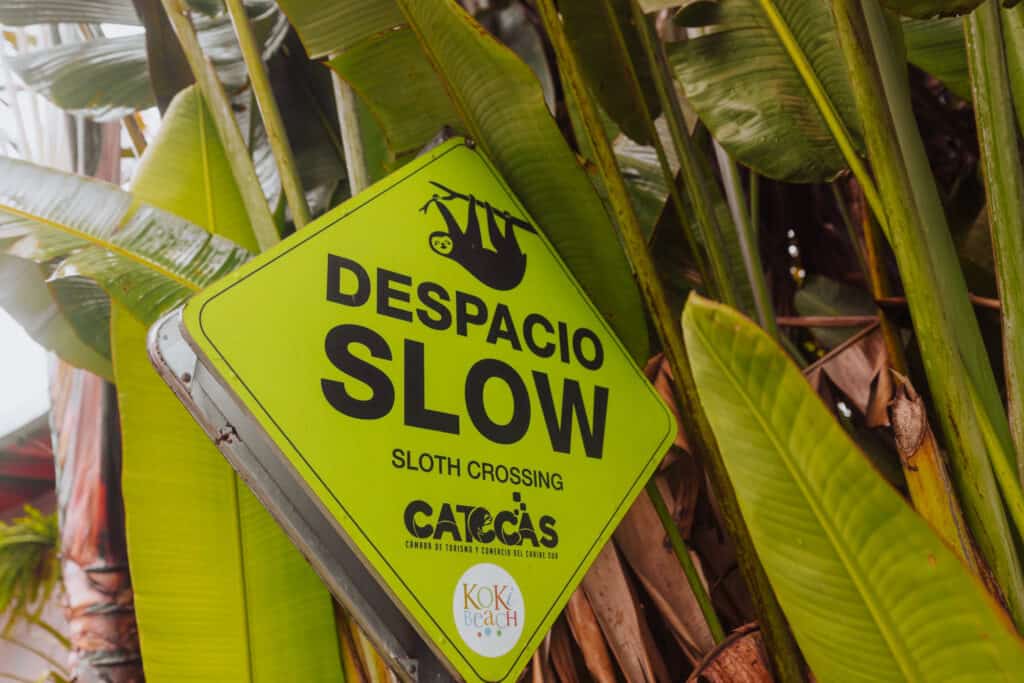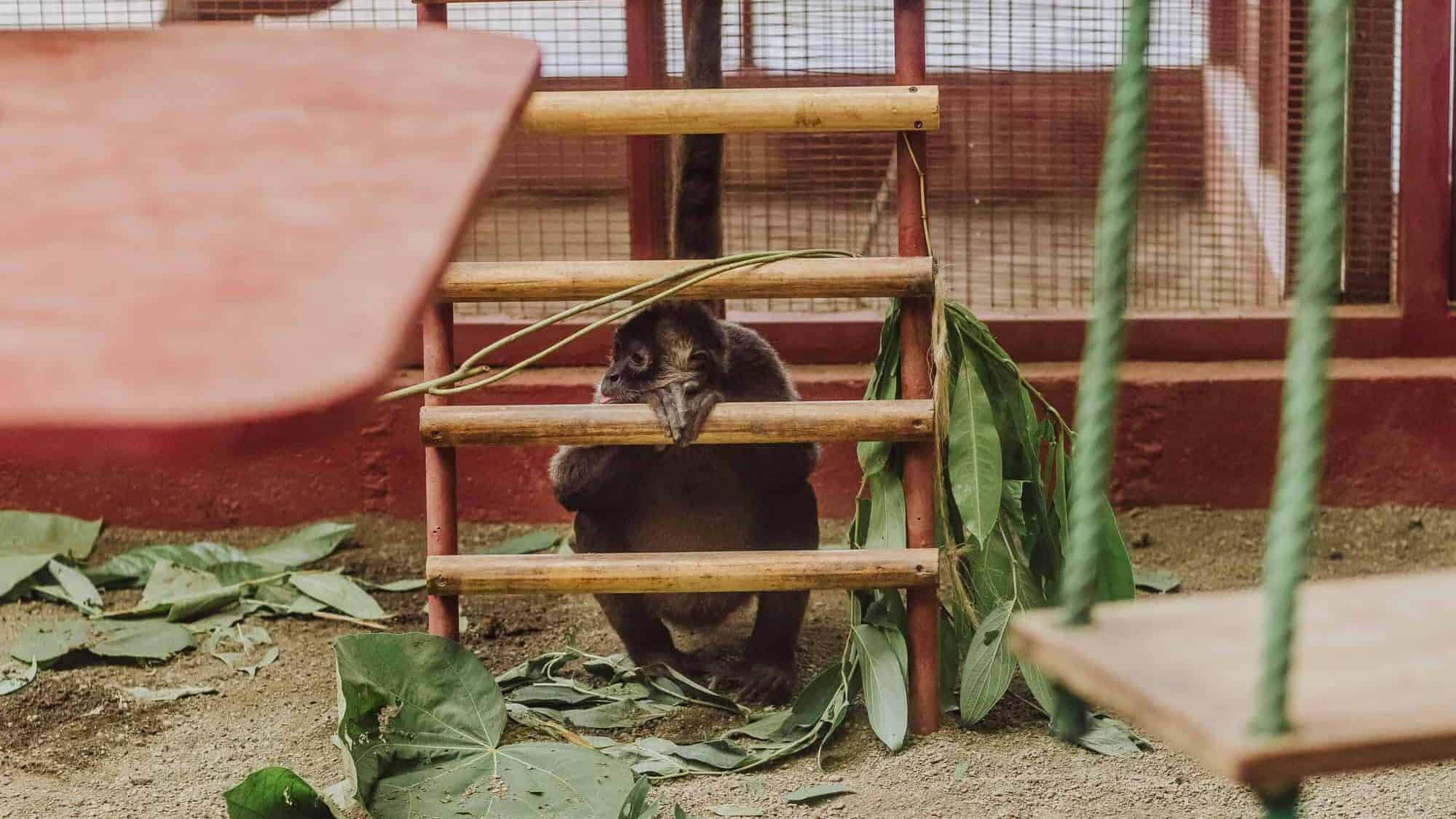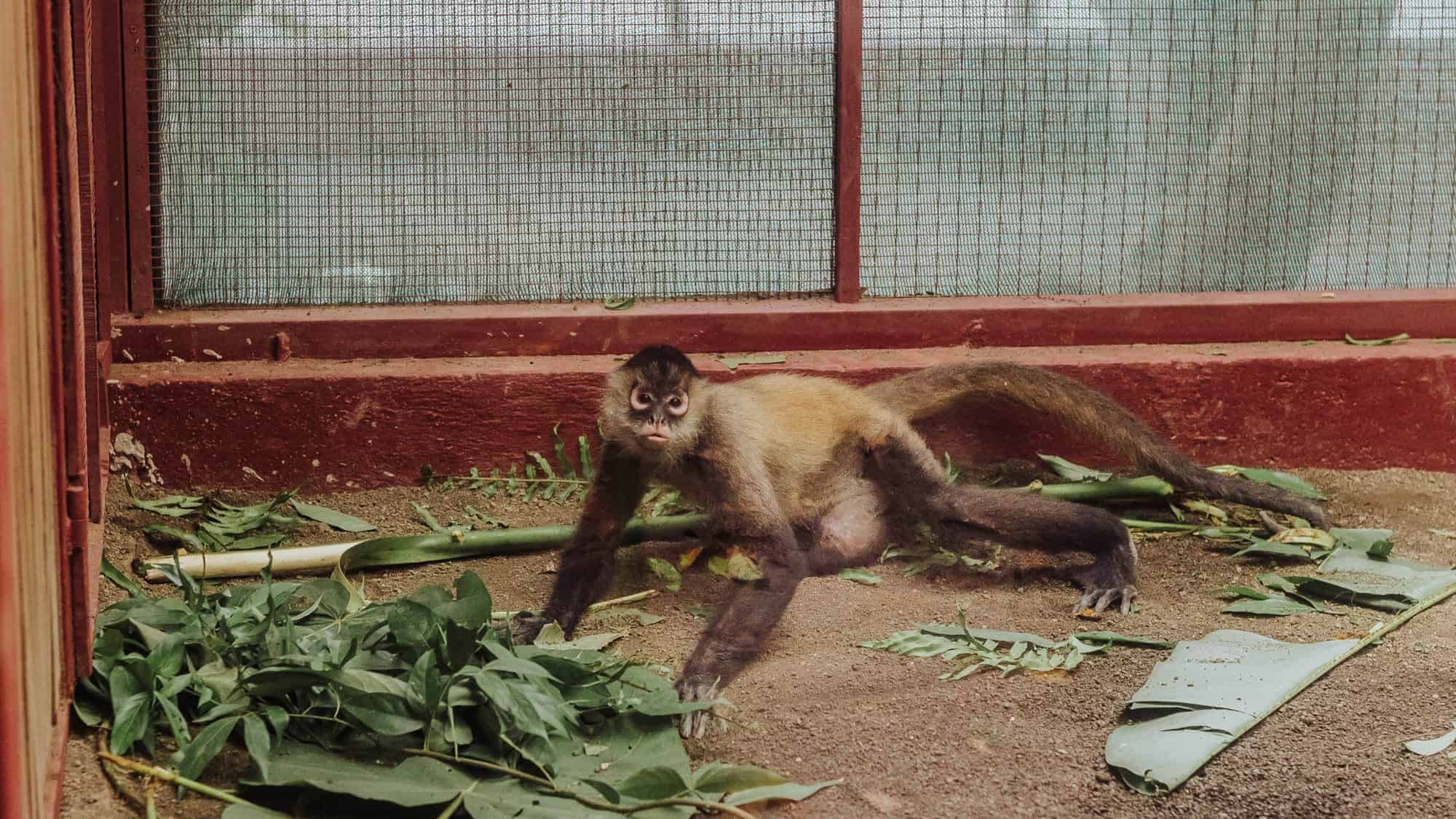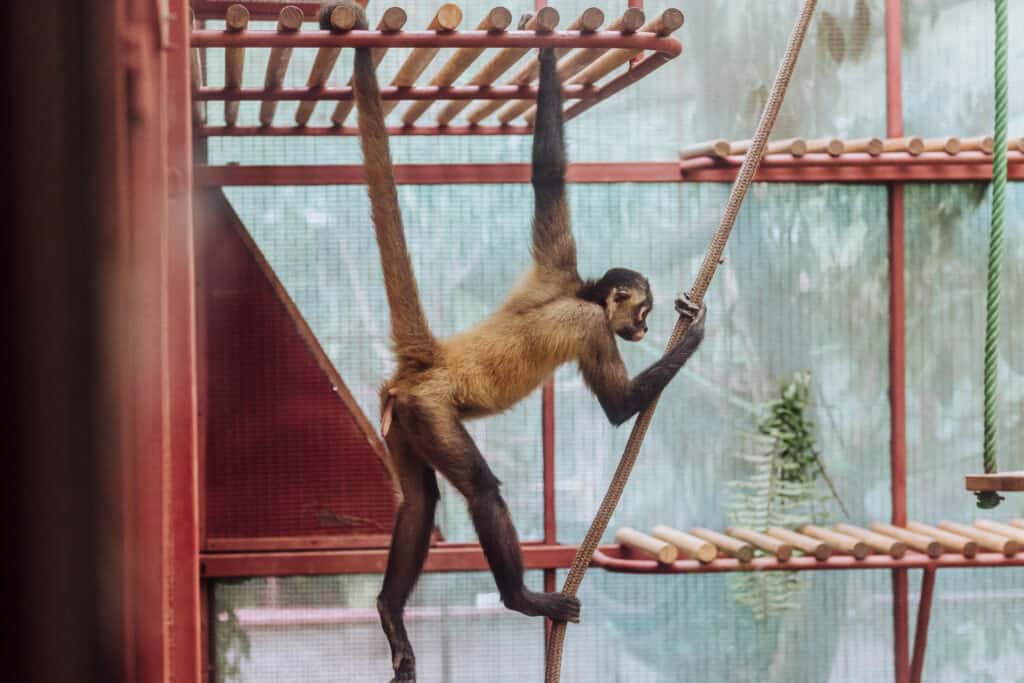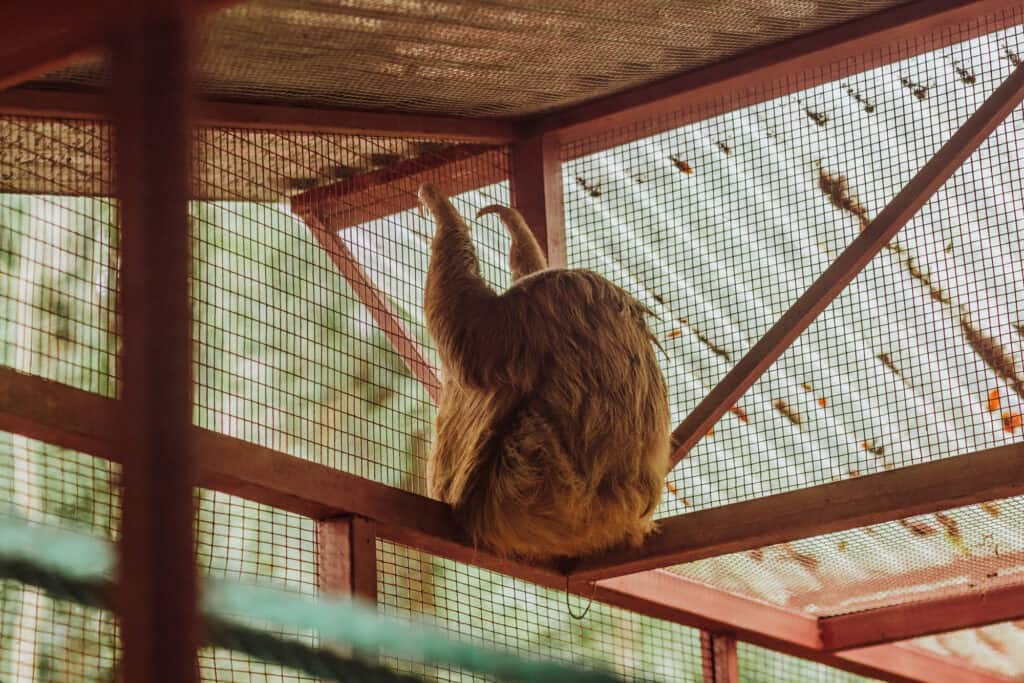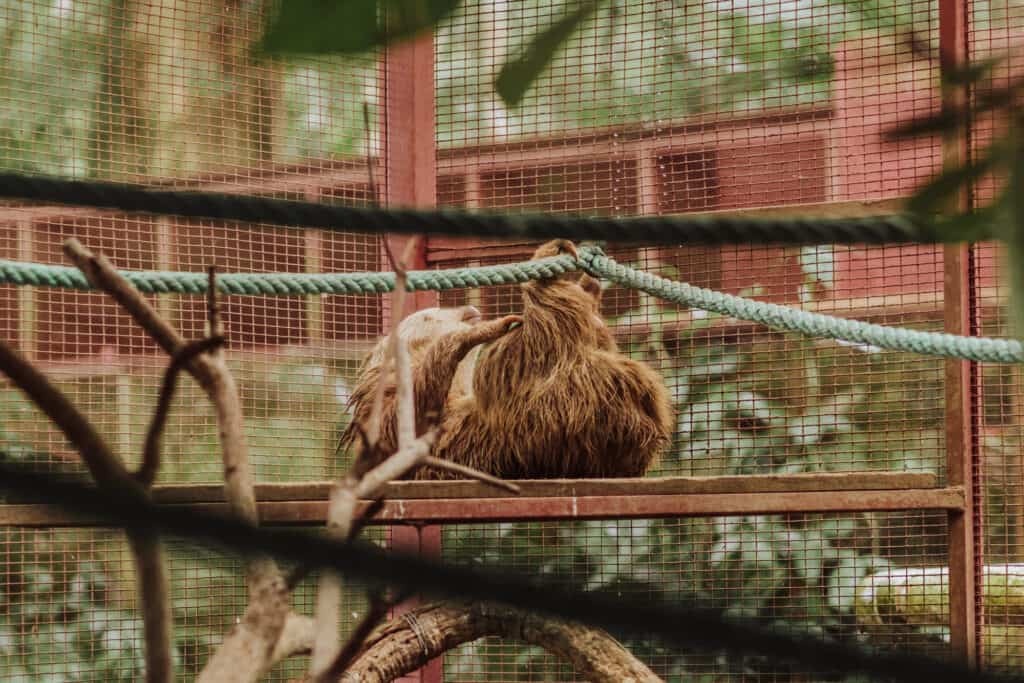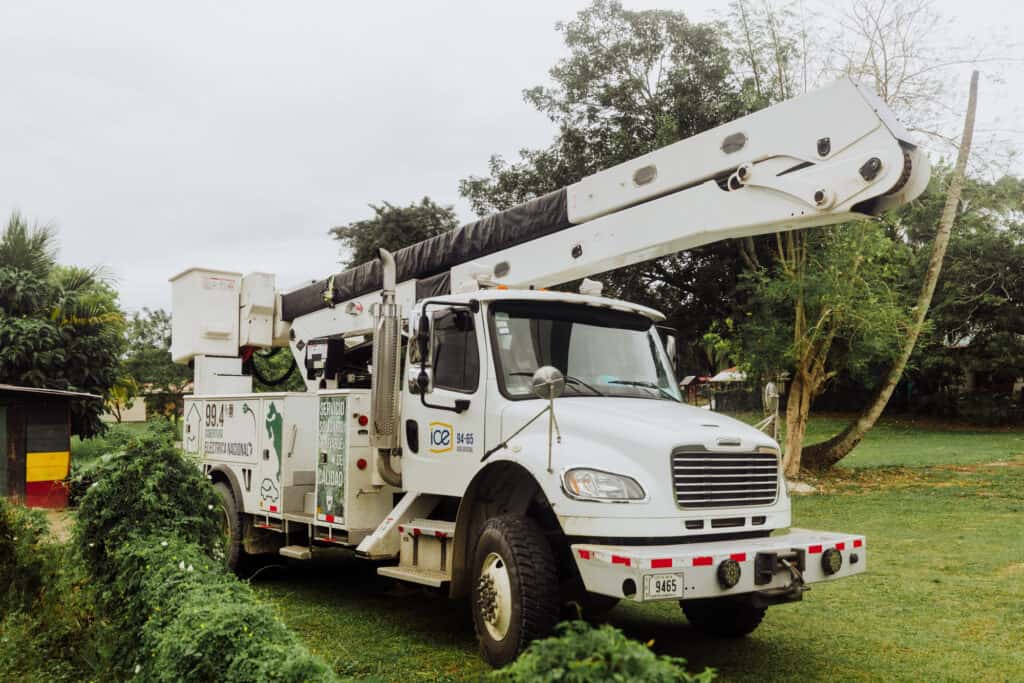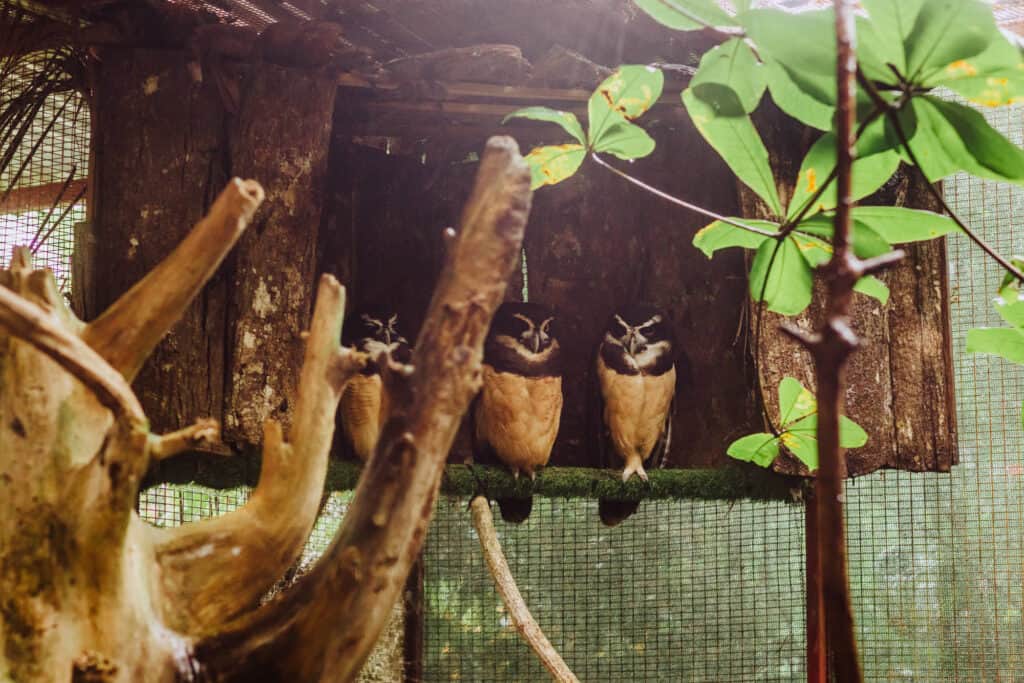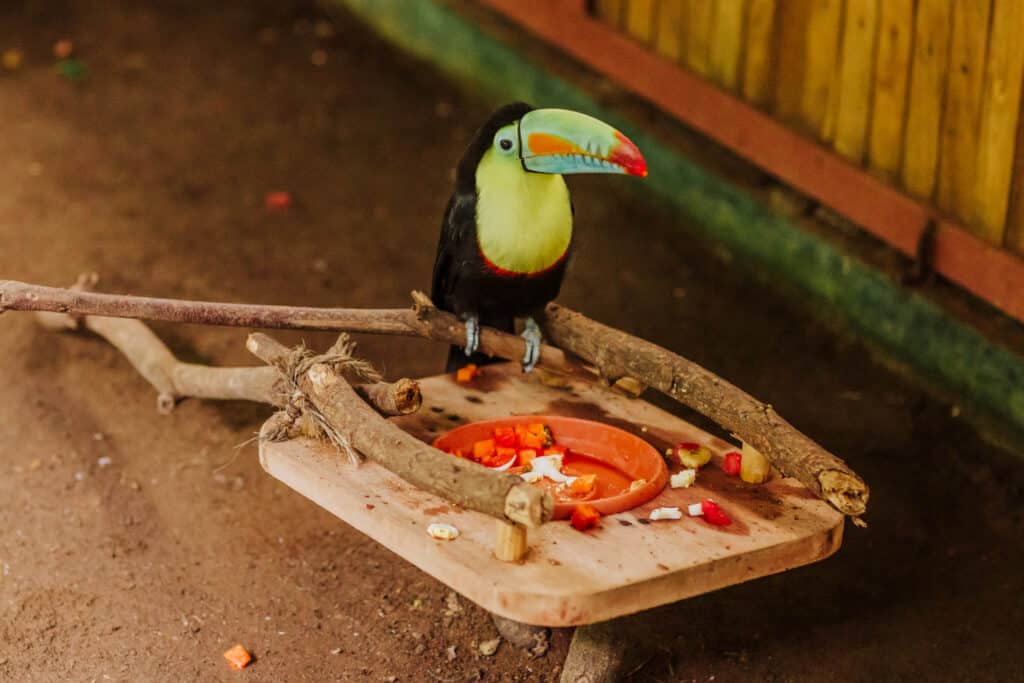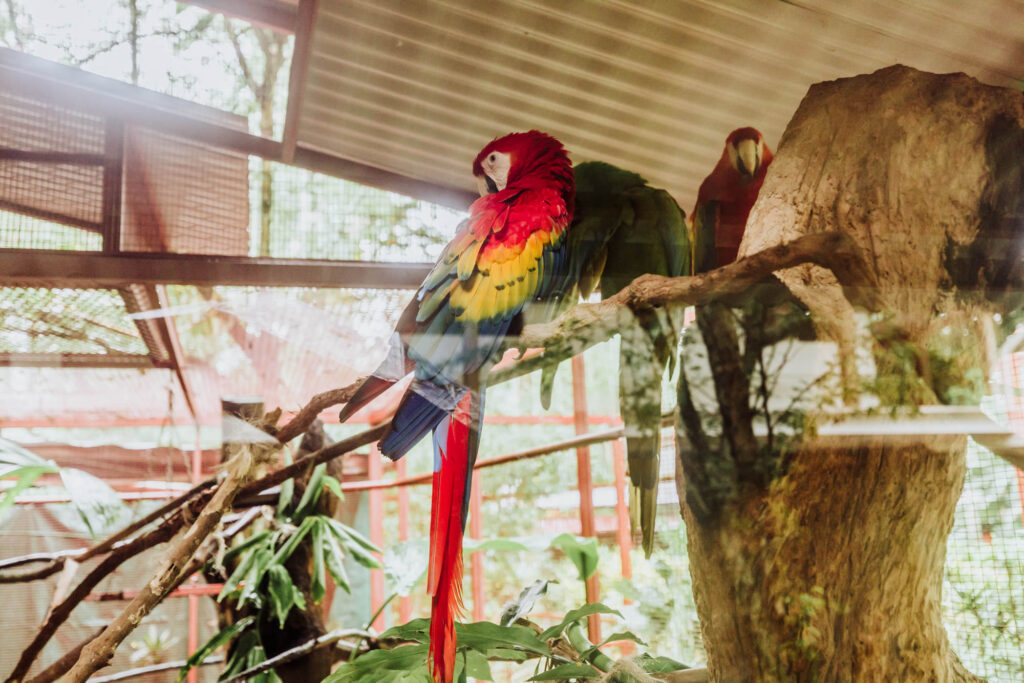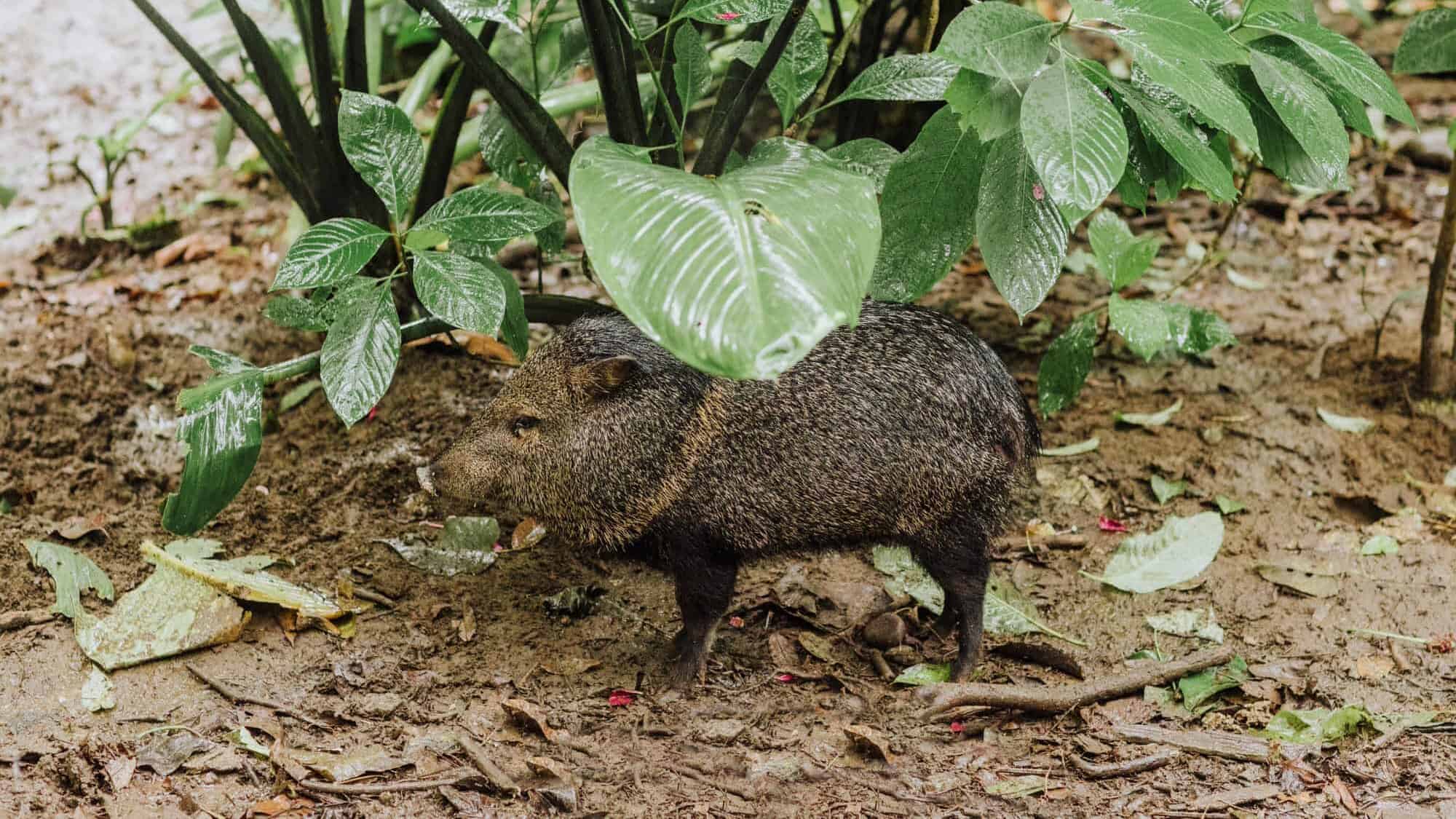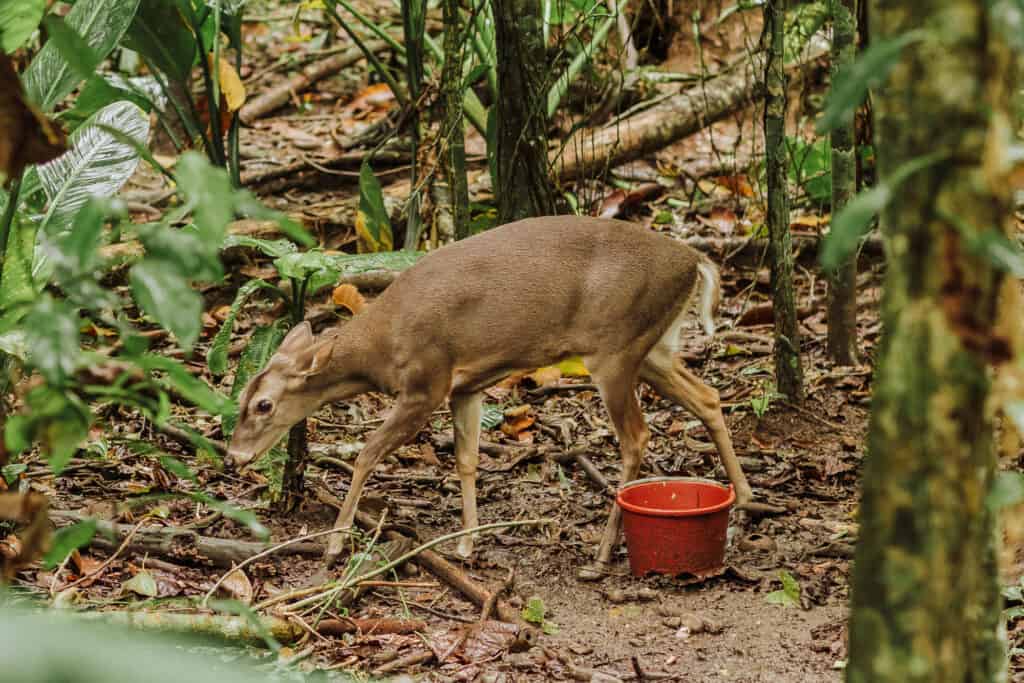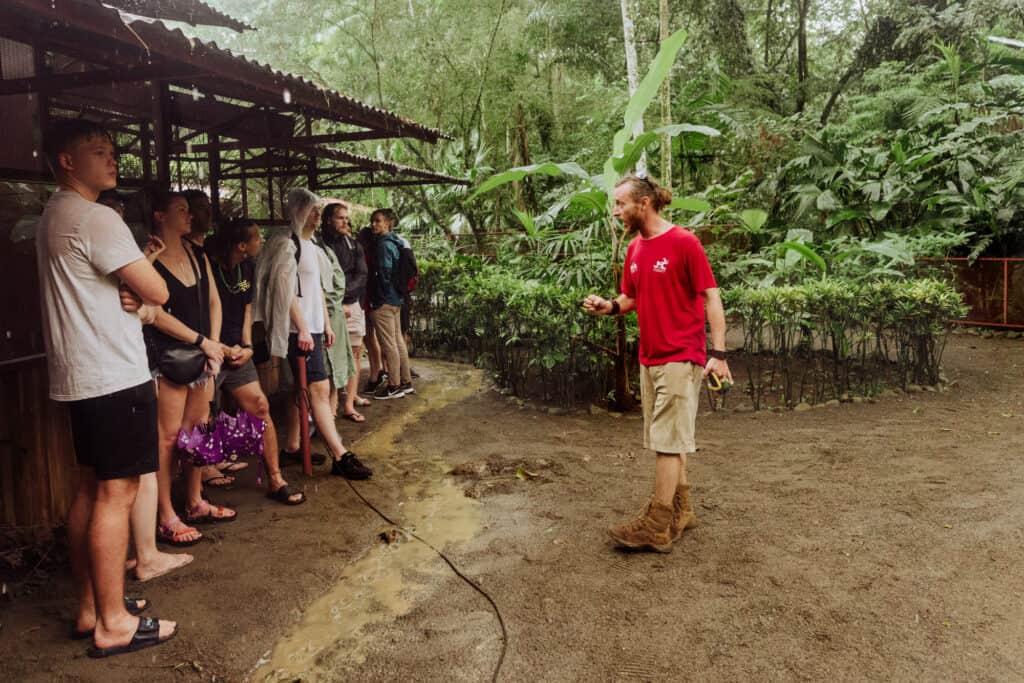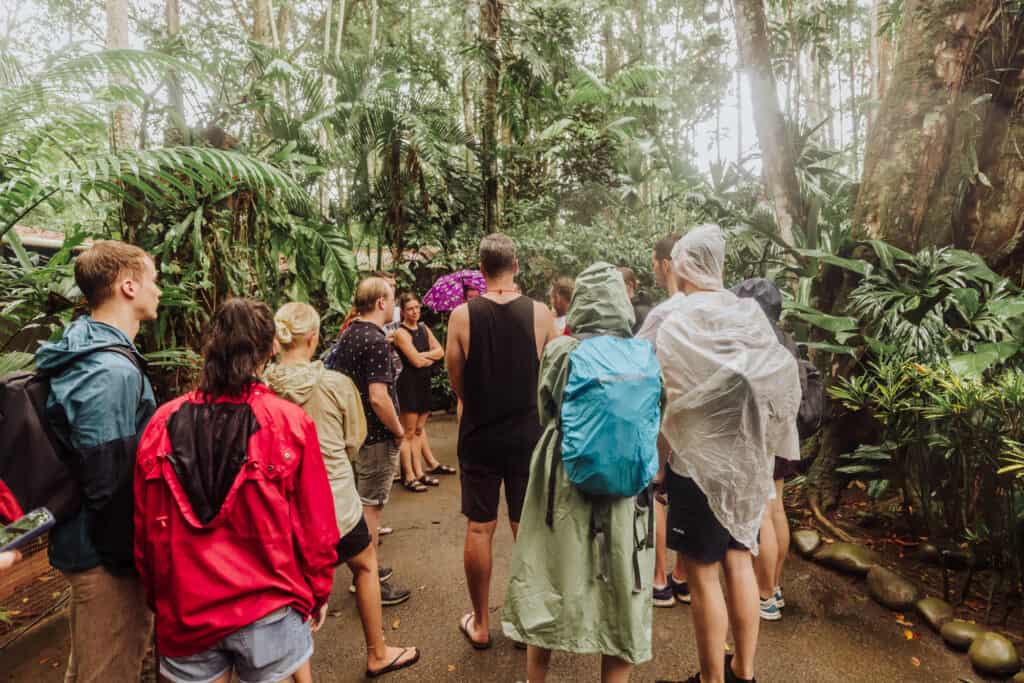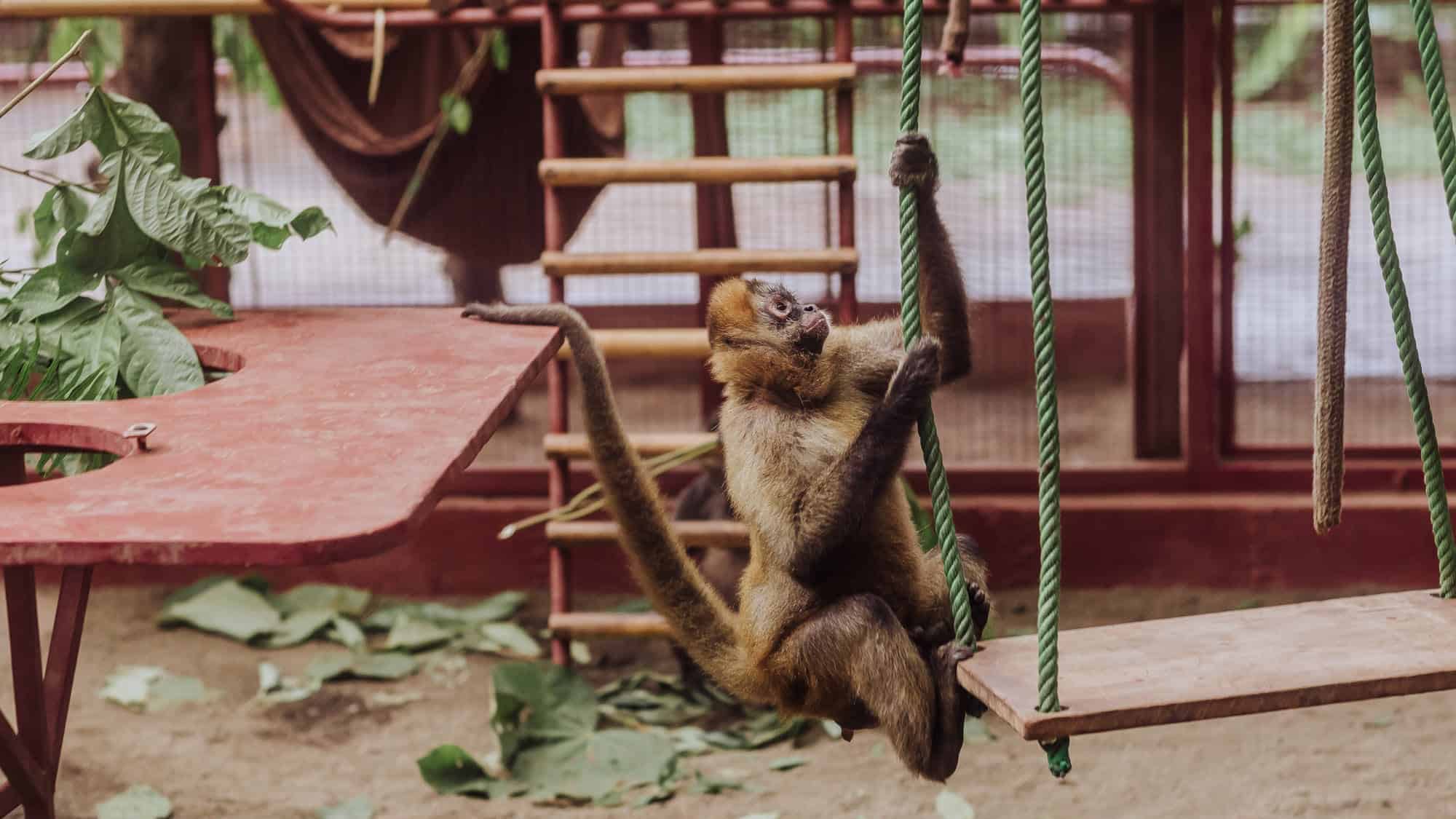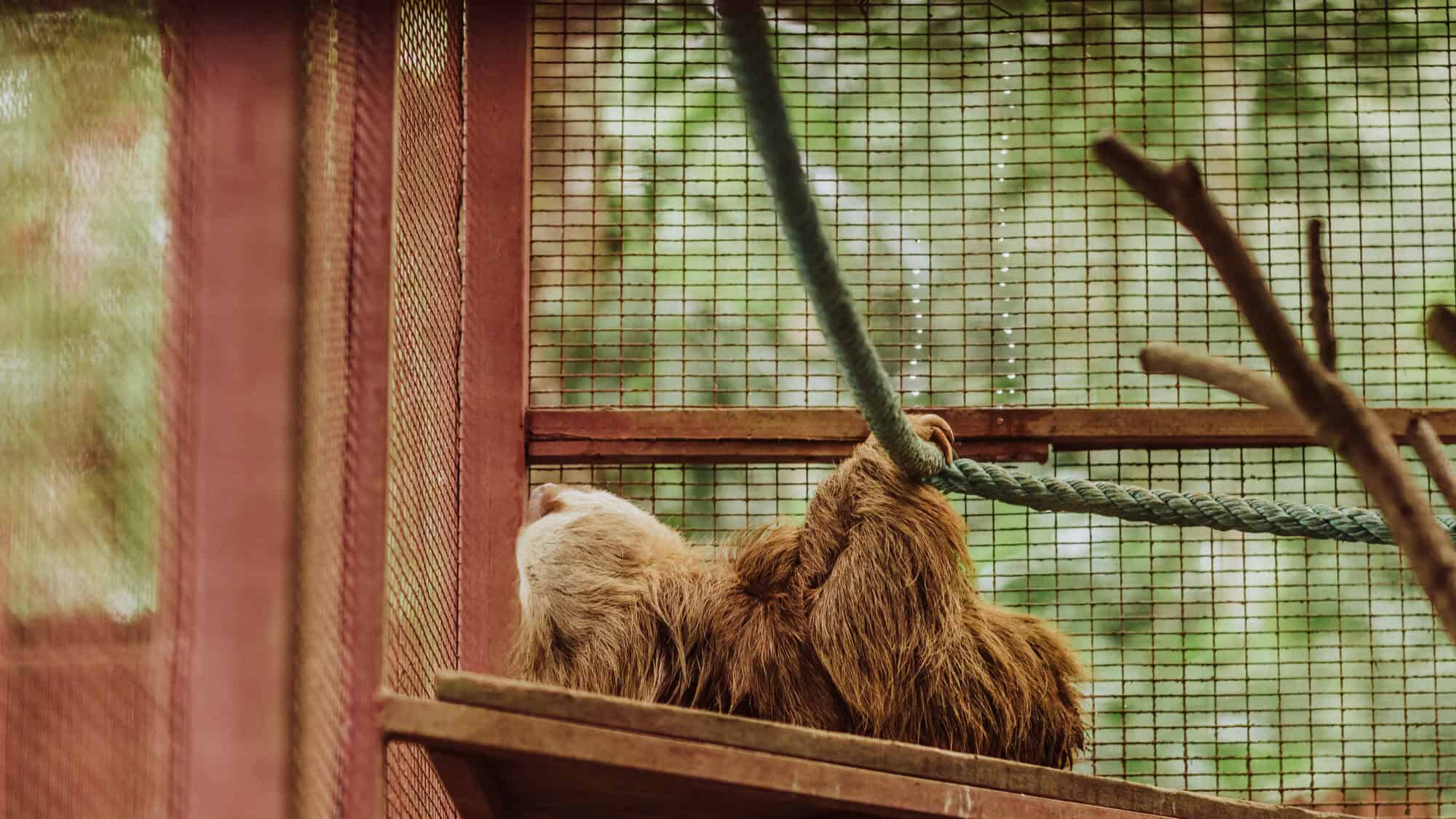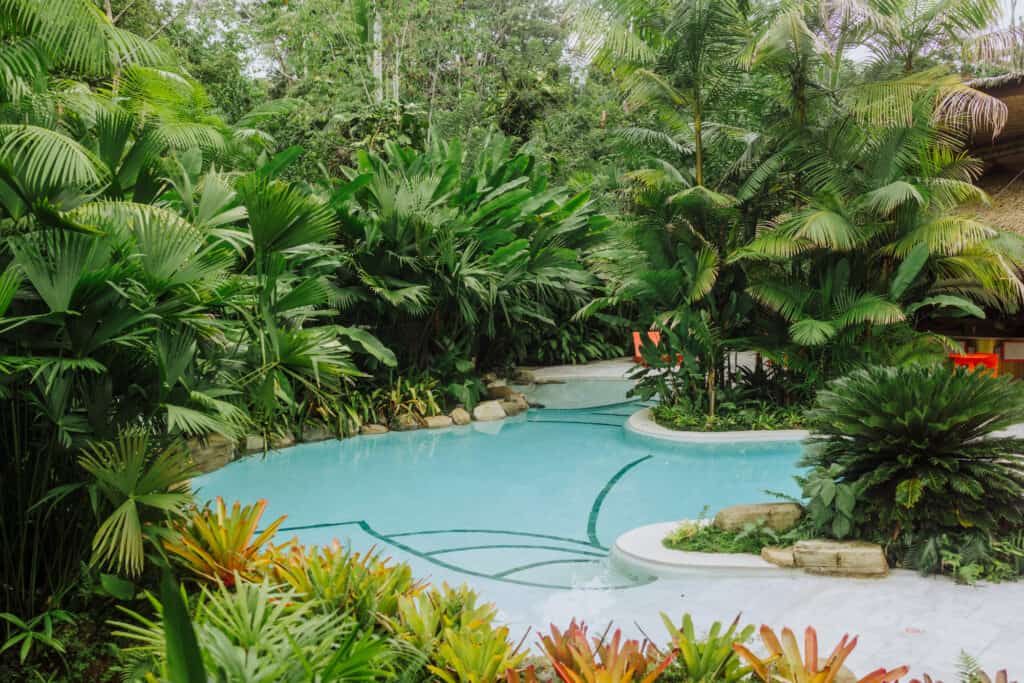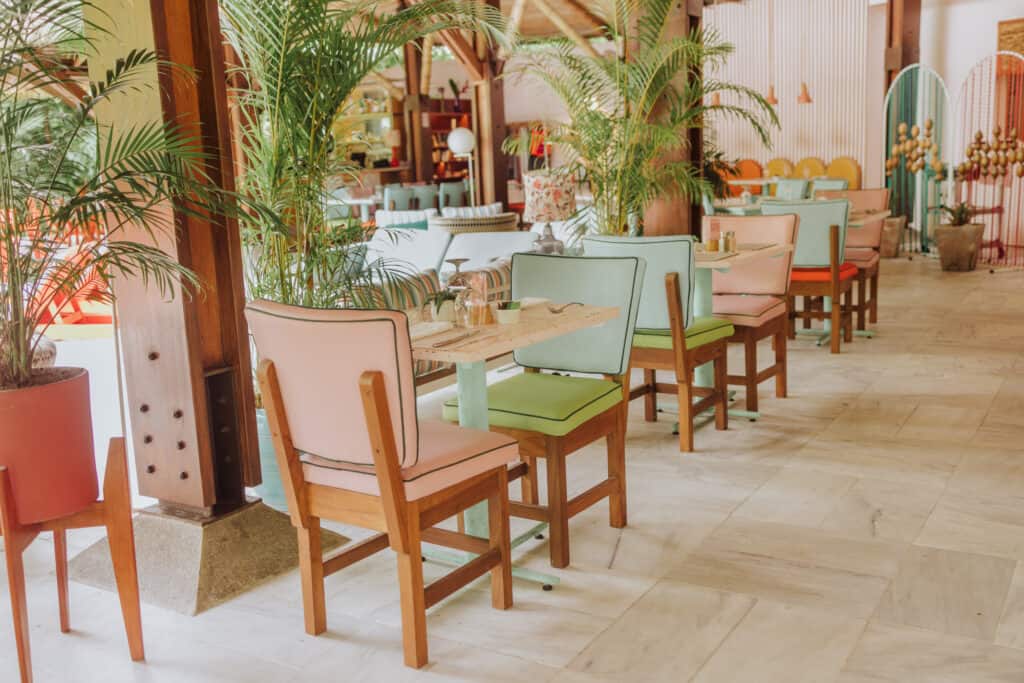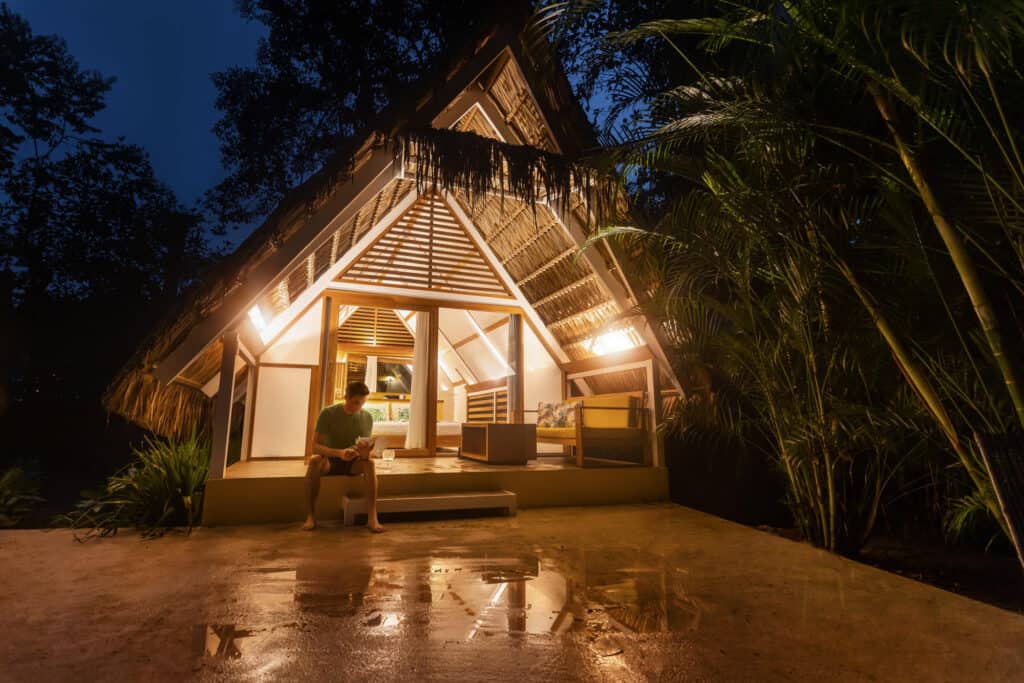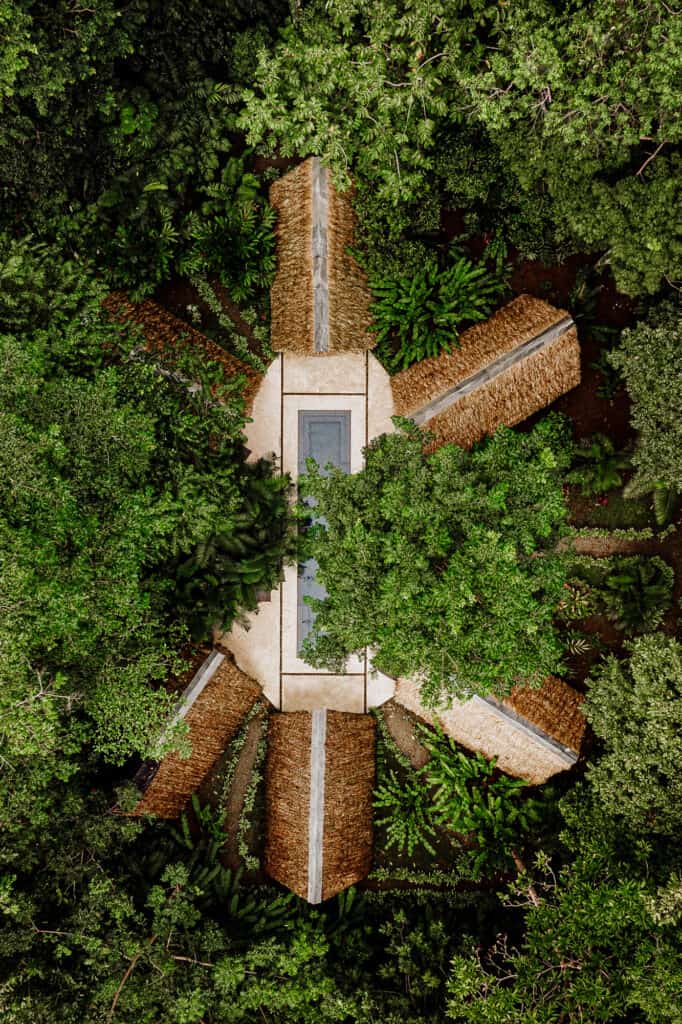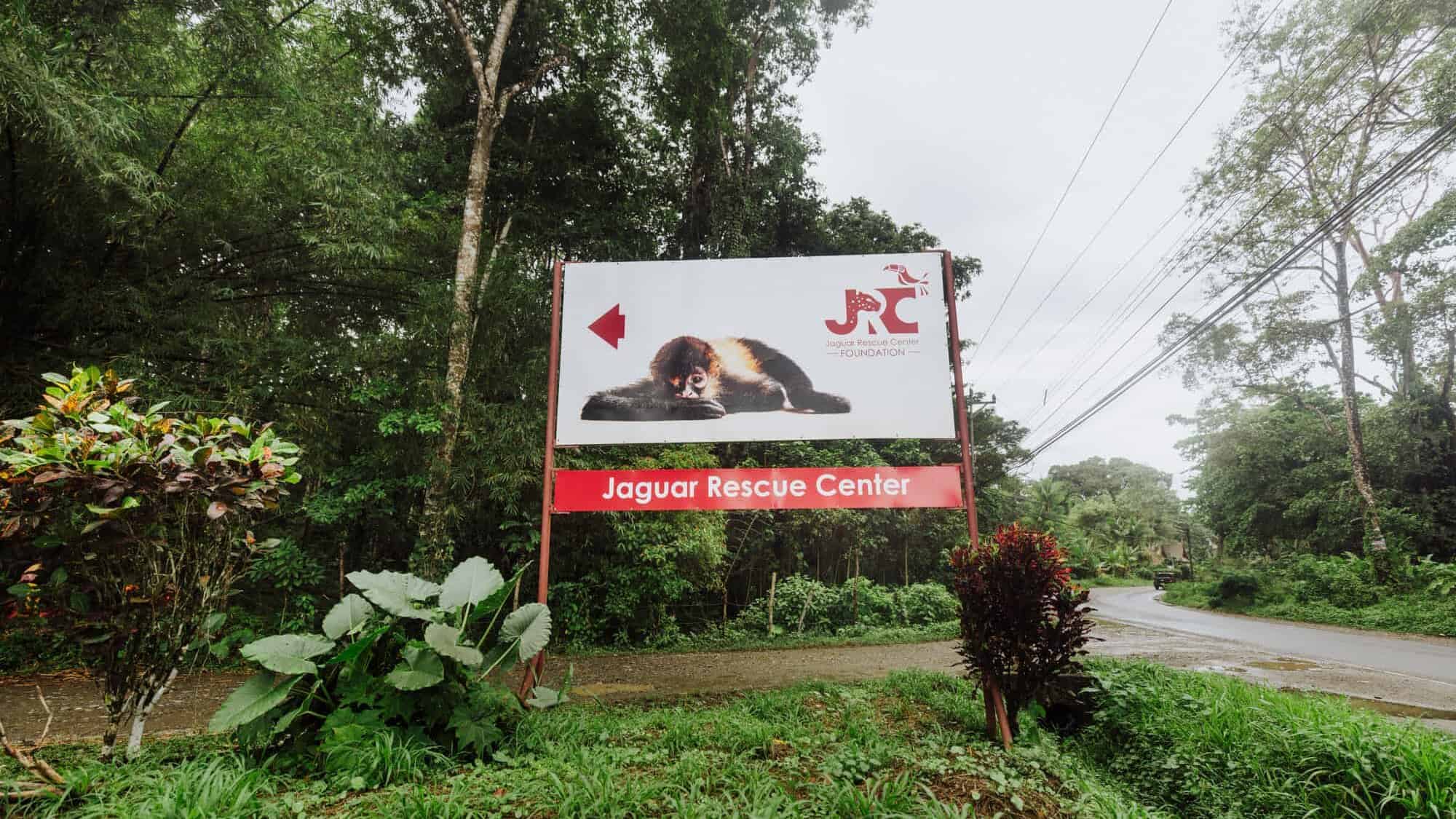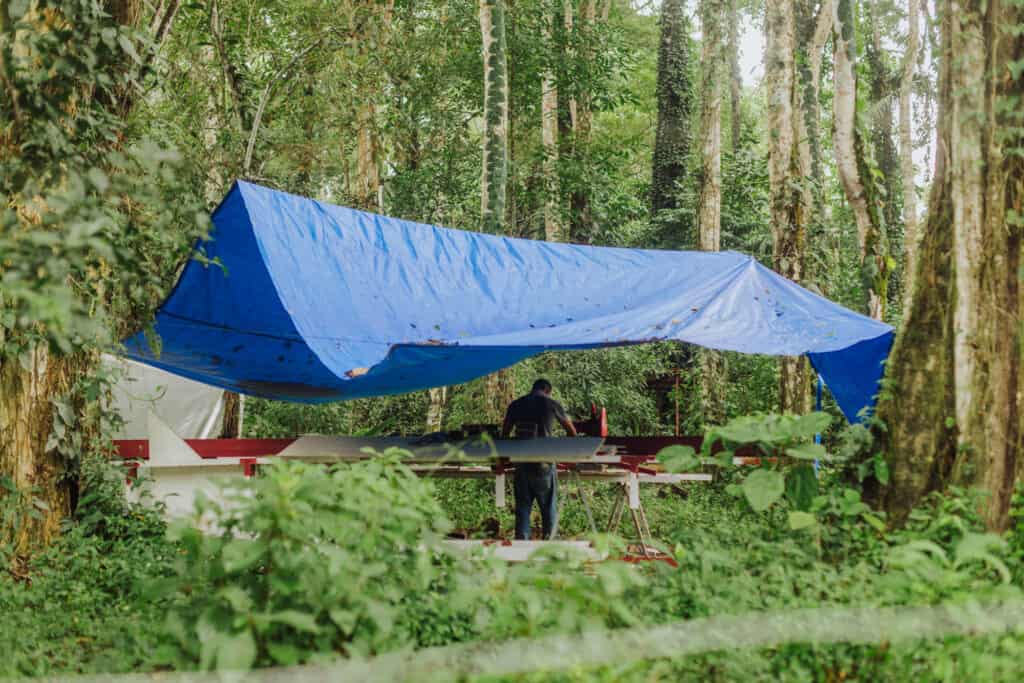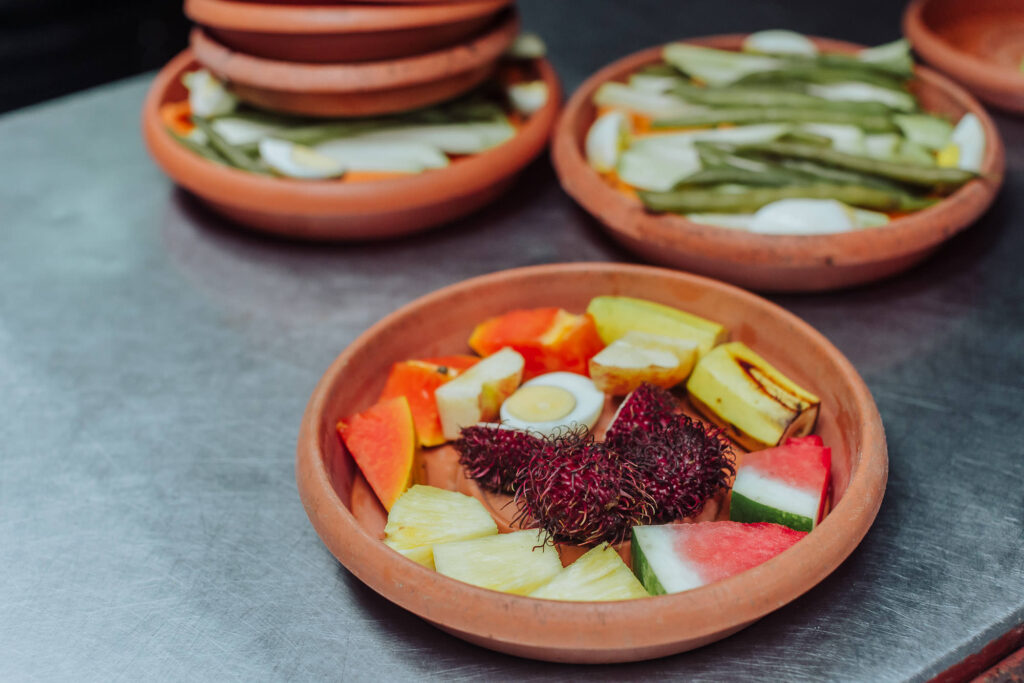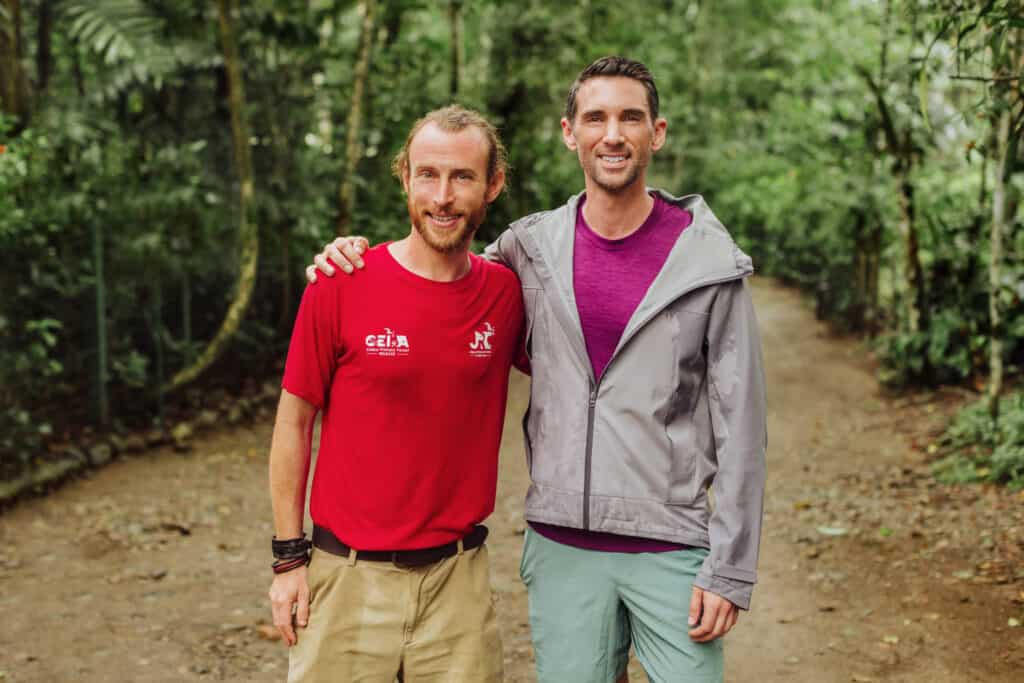Costa Rica Animal Rescue Center: Stories of The Injured Wildlife
BY JARED DILLINGHAM
THE JAGUAR RESCUE CENTER, COSTA RICA
If you’re in the country, I’d suggest a visit to one of Costa Rica’s animal rescue centers or sanctuaries, like the Jaguar Rescue Center near Puerto Viejo.
Costa Rica’s rainforest are full of fascinating wildlife, from sloths to lizards to monkeys. When they’re orphaned or injured, either by humans, other animals, or power lines, they end up in an animal rescue.
The goal of the experts and volunteers at Costa Rica’s animal rescue centers is to rehabilitate the injured wildlife and return them to the forest.
Some of them aren’t able to make it on their own, and these are the stories behind the animals you can visit on a tour of the Jaguar Rescue Center.
An Amazing Costa Rica Animal Rescue Center
The Jaguar Rescue Center is one of Costa Rica’s best animal rescue centers or sanctuaries.
They have a wide variety of animals, offer frequent tours, and have a big group of enthusiastic volunteers.
Maybe most importantly: this Costa Rica animal rescue center really focuses on the best interests of the wildlife. For tourists looking to get photos with sloths in Costa Rica, this is not for you.
In fact, you won’t really come into close contact with any of the injured or rescued animals at the Jaguar Rescue Center, unless they (for some reason) approach you.
Plus, the rescued animals deemed healthy enough for re-release into the rainforest live in a different area, away from the injured animals you’ll see on the tour.
You’re most likely to get a friendly welcome from Baffy, the animal rescue center’s resident dog.
Jaguar Rescue Center Location
It’s worth the long drive from San Jose to get to this Costa Rica animal rescue center!
From San Jose’s airport, it’ll take between four and five hours to get to Puerto Viejo. It’s a town in a rural part of the Limón province, along Costa Rica’s Caribbean Coast.
Rental cars are relatively inexpensive in Costa Rica.
➡️ BOOK HERE: Rental Cars in Costa Rica
I also have a full blog dedicated to things you should know about driving in Costa Rica.
Or, if you’d rather nap in the car and have someone else do the navigating and driving, you can hire a driver in Costa Rica.
➡️ BOOK a Transport: Private Driver (from San Jose)
As for hotels and rentals, you can use this interactive map to plug in the dates you’re considering and check out what’s available in the Puerto Viejo area:
Meet the Wildlife at this Sanctuary
It’s fascinating to learn the stories behind the injured wildlife who now call Costa Rica’s Jaguar Animal Rescue Center “home.” They’re both heart-breaking and inspiring!
Rescued Spider Monkeys
Most of the monkeys brought into the Jaguar Rescue Center fell victim to poorly-insulated power lines and electrocution.
The Jaguar Rescue Center is home to three spider monkeys, which you can visit on your tour. They’ll definitely perform and show off for you from their enclosure.
The story behind the “old man” of the group, Paco, is heart-breaking!
Paco spent 27 years in captivity, wearing a chain and collar. A family kept him as a pet for decades!
He’s far more shy than the other spider monkeys he lives with.
Paco arrived to the sanctuary in rough shape, struggling with poor nutrition and missing teeth. He actually had to do physical therapy to develop his muscles to allow him to climb!
Paco suffered from depression, and essentially didn’t know how to behave like a monkey. The staff at the rescue spent a lot of time with Paco, but they couldn’t seem to boost his spirits.
Enter: Sansa! The younger monkey bothered Paco and forced him to play. Their friendship developed slowly. After two years, he groomed Sansa for the very first time, and are officially now friends.
As for Sansa, she arrived at the Jaguar Rescue Center as an orphan, found after a fight between two groups of spider monkeys.
The staff noticed: she was going blind from cataracts. They consulted an optometrist, who removed her cataracts. Now, she was 80% of her vision back, but “still misses some branches,” according to the staff as she swings through the trees.
The third spider monkey at the sanctuary is Norea. She’s the “alpha female” of the group. Norea had been kidnapped as a baby, and used to sell photos to tourists.
She’s far happier and healthier today at this amazing Costa Rica animal rescue center.
Injured Sloths at the Sanctuary
Costa Rica is home to two species of sloths. The Jaguar Rescue Center receives around 300 sick or injured sloths each year. Most of the injuries are the result of the sloths falling out of trees. Others have injuries from cars or animal attacks.
The Jaguar Rescue Center staff always attempts to return the baby sloths to their mothers. They’ll actually record the baby’s cry, and play it on speakers in the rainforest. The mother sloth will make the effort to come down from the tree if she hears her baby’s unique cry.
The Jaguar Animal Rescue has several sloths you’ll see on a tour.
In one enclosure, a mother-daughter pair, named Mamma Mia and ABBA, arrived with injuries from power lines.
Many of the power lines in Costa Rica aren’t insulated, and often have bare wires exposed. Animals that touch the lines can easily be electrocuted.
Mamma Mia was crossing a wire with ABBA, her baby, around her belly. The bare wire burned Mamma Mia’s arm, which had to be amputated. ABBA was paralyzed in the back leg.
Fortunately they were brought to the rescue center and treated. They’ve been some of the sloths-in-residence since 2016.
The Jaguar Rescue Center is partnering with the power company in Costa Rica to hang new power lines with top level insulation. They’ve been working on replacing all of the wires between Puerto Viejo and Manzanillo.
As part of their agreement, the Jaguar Rescue Center buys the supplies, while the power company staff does the work for free.
The cost is $6,000 per kilometer. They’re redoing the power lines along the main highway, and the side streets, too.
Rescued Birds at the Animal Rescue Center
The animal rescue is home to three striped owls, who have wing problems.
One of them, Oden, is missing an eye. Losing an eye means he has no depth perception, so he cannot hunt.
Owls are victims of an unfortunate Costa Rican myth. According to the legend, if an owl shows up three times, someone will die. It has superstitious people throwing rocks at owls.
The beautifully-colored tropical birds at the sanctuary were almost all kept as pets in their prior lives.
The rainbow toucan fell out of its nest and has brain damage. She has no depth perception.
As for the macaws, most were kept as pets. Many of their wings are under-developed, which means their enclosures were too small. Macaws in the wild can fly 30 kilometers a day.
The Great Green Macaw is endangered, and popular in the illegal pet trade.
There are only 1,000 to 1,500 Great Green Macaws left in the wild.
The Jaguar Rescue Center is proud to have nursed many back to health. The staff also introduced a breeding program, which has been successful. Lucky visitors will see a flock of the endangered macaws flying around the property.
The Other Animals.
You’ll be entertained and touched by the various stories surrounding the other animals at the animal rescue.
Pancha, a caiman who landed at the sanctuary after showing up in a hotel room bathtub.
Many of the residents have mischievous sides. This wild pig figured out how to work the slide locks on the gates.
Chai, the sanctuary’s resident white-tailed deer, simply wanders on her own through the property.
Jaguar Rescue Center Tour Options
Public tours of the animal rescue take place in the morning, usually at 9:30am and 11:30am for English-speakers. Tours last about 90 minutes, and will cost about $25 (US dollars).
Guides offer tours in English, Spanish, French, and German.
If you have limited time in this part of Costa Rica, consider bundling your visit to the animal rescue center with a stop at beautiful Punta Uva Beach, or Cahuita National Park:
📍 BOOK a Tour: Jaguar Rescue Center + Punta Uva Beach & Jungle
📍BOOK a Tour: Jaguar Rescue Center + Cahuita National Park
Cruise ship passengers can book a tour of the Jaguar Rescue Center from the port in Limón:
📍BOOK a Tour: Jaguar Rescue Center from Limón’s Port
The Jaguar Rescue Center also offers private tours each day at 2:00pm. The cost is $75, and there’s a minimum of two people per tour. You’ll get a longer tour, and since the animals are more active in the afternoon you’re more likely to see them in their enclosures.
Why You Can’t Take Photos with the Animals
Sloths aren’t as slow as we think. They don’t want to be noticed, and their main defense is staying still.
For a sloth, human interaction can be stressful enough to trigger a heart attack.
Costa Rica actually has a law, which bans photos of human-animal interaction. The staff at the Jaguar Rescue Center take the policy seriously.
Where to Stay Near the Wildlife Sanctuary
The Puerto Viejo area is full of lodging options, including luxury hotels, environmentally-friendly ecolodges, and inexpensive rooms to rent.
🌎 Jared’s Detours Blog: Puerto Viejo Hotels & Ecolodges
I’d recommend Aguas Claras for a luxury stay. It’s part of the Cayuga Collection of hotels, and is right across the street from the Jaguar Animal Rescue Center. You’ll love the secluded suites and cabins, and also the beautiful pool and restaurant area:
➡️ BOOK: Aguas Claras (5-star hotel with private beach)
I also highly recommend the Shawandha Ecolodge, which is one of the best hotel deals in Costa Rica. You’ll get your own bungalow or hut, secluded in the rainforest near Puerto Viejo. Plus, Shawandha is just a short walk to the Caribbean Sea.
➡️ BOOK: Shawandha Ecolodge (bungalows for a great deal)
I’d also check rates at Umami and Le Cameleon, two beautiful hotel properties in the Puerto Viejo area, which are a short drive to the Jaguar Rescue Center.
➡️ BOOK: Umami Hotel (short drive from the town of Puerto Viejo)
➡️ BOOK: Le Cameleon Hotel (right on the beach!)
How the Animal Rescue Center Operates
The Jaguar Rescue Center relies on donations and income from tours to fund all of their activities.
They do offer free tours for school groups, to educate students and hopefully turn them into good stewards of the Costa Rican environment.
The Jaguar Rescue Center takes in between 800 and 1,000 animals a year. They say they’ve never turned a wild animal away, and they’re the only rescue of their kind on Costa Rica’s Caribbean Coast.
The animals who arrive are delivered by law enforcement officers, people in the community, or by families surrendering animals they can no longer care for.
In addition to the animals you can visit on tours, they have quadruple that amount in another area which is off-limits. Animals they’re preparing to release shouldn’t have contact with people or their smells.
The goal is to get every animal that arrives back into the wild, but of course: some of them are too sick or injured to survive on their own.
What Happens to the Animals Released into the Wild?
The animals that arrive at the rescue center are in really bad shape. While, sadly, half don’t survive, a remarkable 41% are nursed back to health and returned to the wild!
They do their best to track the animals, but can’t use GPS for all of them. It turns out: different animals are tracked in different ways.
Some are micro-chipped when they’re released.
The birds get a ring to wear around their leg.
Many of the animals are released onto one of two large nature preserves, which have cameras that can track them.
The sloths get fingernail paint, which makes them easier to spot on the cameras.
Volunteer at the Jaguar Animal Rescue Center
The Jaguar Rescue Center has about 30 people on staff. Many of them spend time rebuilding and remodeling enclosures for the injured wildlife.
The rainforest that’s part of the rescue center is buzzing with construction sounds, and you’ll see tents with crews working on projects for the incoming wildlife and injured animals.
Others work in the kitchen, fixing food the wide range of inhabitants. They prepare meals of meats and fruits, and say it amounts to around 200 plates of food per day.
Plus, the animal rescue has a medical staff on site. The hospital employs two veterinarians, plus a staff of volunteers. They have their own operating room, which allows them to evaluate and treat all injured wildlife on site.
Our tour guide, Johnny, is a 36-year-old who keeps going back. He’s volunteered at the Jaguar Rescue Center for three different stints, each of which lasted about a year.
In his past life, he ran political campaigns. He’s much happier at the animal rescue center 😀
Are There Jaguars in Costa Rica?
Yes! Costa Rica is home to jaguars and other large wildcats. The Corcovado National Park (in southwestern Costa Rica) is the place to go to spot jaguars in the wild.
There are no jaguars at the Jaguar Rescue Center. The wildlife sanctuary got its name from rumors in town.
Two biologists from Barcelona met on the beach, fell in love, and moved to Puerto Viejo. When people in the area learned that a couple of animal experts had moved in nearby, they started bringing injured animals to them.
A couple people thought they’d found a baby jaguar to bring to the biologists, which is how the Jaguar Rescue Center got its name. In reality, the good samaritans had rescued a baby ocelot, which they mistook for a jaguar. Still, the name stuck!
Other Things to do in Puerto Viejo
If you’re making the drive to Costa Rica’s Caribbean Coast, it’s worth sticking around for a few days. Cahuita National Park is a must-see for its nature walk, which continues several kilometers down the coast.
You can go on your own, or go with an expert who will also take you to nearby waterfalls:
📍 BOOK a Tour: Cahuita National Park + Waterfall
The Puerto Viejo area is also famous for its cacao plantations, and there are a number of chocolate tours to check out:
📍BOOK a Tour: The Chocolate Forest
📍 BOOK a Class: Chocolate Making
You can simply relax on one of Limón’s beautiful beaches, like Punta Uva, Manzanillo Beach, Playa Cocles, or Playa Negra.
Or you can do something adventurous, like booking a white water rafting tour:
📍 BOOK a Tour: White Water Rafting Trip on the Pacuare River
Check out my other blogs on Costa Rica, and the videos we’ve posted about different sites to see if you visit:
🌎 Jared’s Detours Blog: Manzanillo Beach
🌎 Jared’s Detours Blog: Costa Rica’s Coffee Tours
